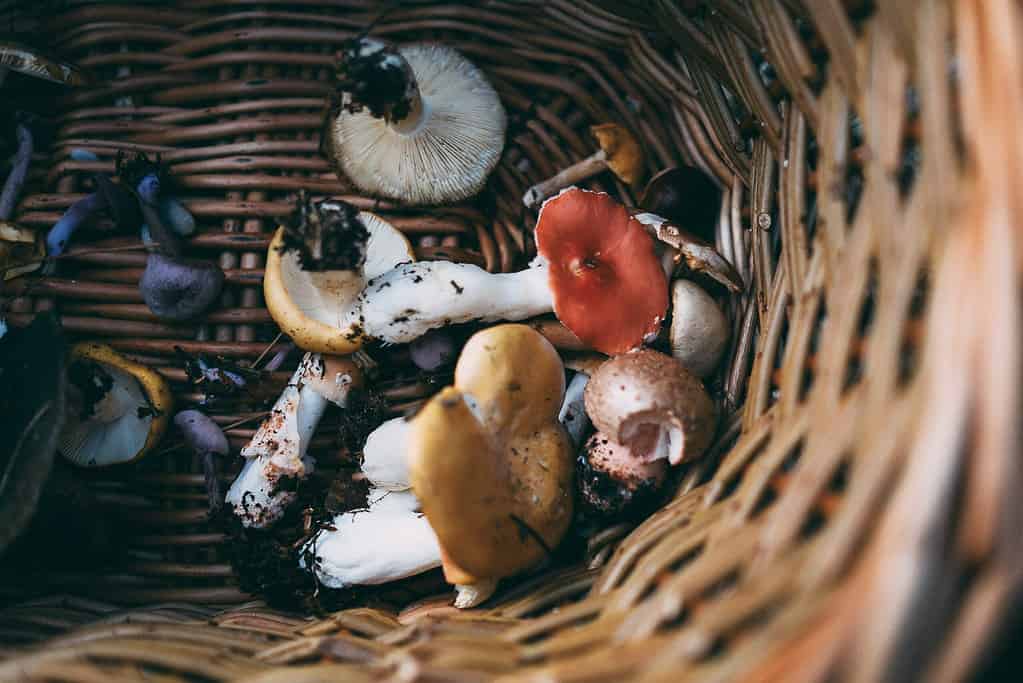
Foraging for mushrooms is a fun and rewarding activity that can bring you closer to nature. It’s also a great way to find delicious and healthy ingredients for your meals.
However, it can be a bit challenging to get started if you’re not familiar with the process — and there are seriously poisonous mushrooms out there. In this article, I will share my tips and tricks on how to forage for mushrooms.
Before you start foraging
First and foremost, it’s important to do your research before heading out. Make sure you know which mushrooms are safe to eat and which ones are poisonous. You can find plenty of resources online, such as field guides and forums, that can help you identify different types of mushrooms. Additionally, it’s a good idea to start with easy-to-identify mushrooms, such as chanterelles and morels, before moving on to more advanced species.
Perhaps the most important thing to keep in mind is to only forage mushrooms you can identify absolutely, positively, with 100% certainty. When in doubt — leave it out. That applies to every single sliver of doubt.
Let’s look into a bit more detail about how to prepare for foraging for mushrooms.
Research the area you plan to forage in
This is absolutely the first step. Even if you’re going to an area you’re very familiar with, it’s worth checking it out first. First, look out to see if there are any laws or regulations that prohibit mushroom foraging in the area.
Then, look for any potential hazards. Are there any wild animals in the area? Any extreme weather you may encounter? Any risk of getting lost? Nowadays, we all have smartphones for orientation, but what if you’re foraging in an area without coverage? Those are always the things you should research before any trip. Having a physical map can go a long way.
Lastly, you definitely want to look up what types of mushrooms grow in your area.
Look up the mushrooms that grow in the area and you can forage
There’s a wide variety of mushrooms that grow on the planet. There are some 14,000 species of mushrooms that have been described. You can’t know all of them, so if you know what to expect, you can narrow it down and focus on the mushrooms that grow in your area. Many of them look quite similar, and you need to identify them with certainty.
Another important aspect of mushroom foraging is finding the right location. Mushrooms grow in a variety of habitats, including forests, fields, and even your own backyard. Look for areas with plenty of moisture and shade, as well as a variety of plant life.
It’s also a good idea to check the weather forecast before heading out, as mushrooms tend to grow best in damp conditions. You should also look up the timing: mushrooms aren’t out the entire year, you need to time it right.
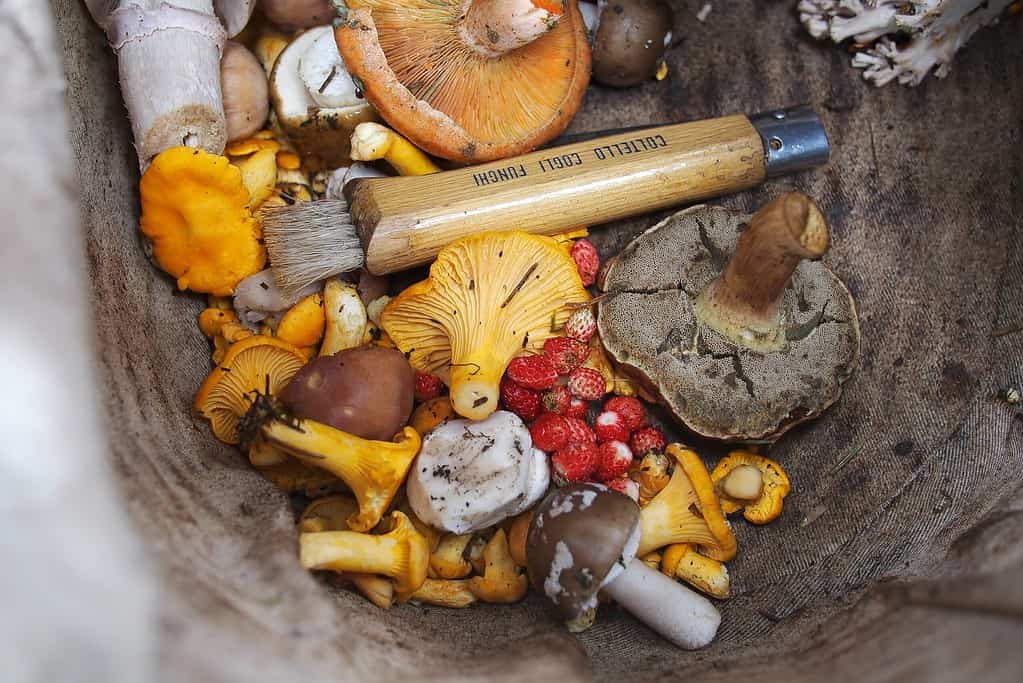
Of course, being able to identify mushrooms you forage is easier said than done.
Buy a book to identify mushrooms
If you’re a beginner, you don’t want to take any risks. I know, I’ve mentioned this before, but some mushrooms really are poisonous. Some poisonous mushrooms look pretty similar to some delicious ones. Don’t risk it — only forage what you can identify.
Of course, you can use apps, you can use the endless stream of information that is the internet. However, if you’re going out in the field, I’d recommend a book to identify mushrooms.
There are a ton of good books out there, and again, this depends on your area and the mushrooms that grow in your area. You can also borrow a book from the library if you’re not sure you want to commit. But don’t go foraging mushrooms without a book!
- Hyman, Frank (Author)
- English (Publication Language)
- 256 Pages – 10/05/2021 (Publication Date) – Storey Publishing, LLC (Publisher)
- Johnson, Whitney (Author)
- English (Publication Language)
- 192 Pages – 03/04/2025 (Publication Date) – Cool Springs Press (Publisher)
- Hardcover Book
- DK (Author)
- English (Publication Language)
- 360 Pages – 07/15/2013 (Publication Date) – DK (Publisher)
- Lincoff, Gary (Author)
- English (Publication Language)
- 208 Pages – 06/15/2017 (Publication Date) – Quarry Books (Publisher)
Dress appropriately
If you’re going out foraging for mushrooms, the odds are you’ll end up in forests or fields. You want to be prepared with sturdy footwear, long pants, and sleeves to protect against insect bites and brushes.
Be particularly aware of ticks. Mushrooms love moisture, as do ticks. After you get back home, always shower and look for any particular insects.
Bring tools
Having a basket or a mesh bag to collect the mushrooms can be very helpful. You can use a backpack as well, but you need another bag to put inside so that the mushrooms don’t disintegrate all over your backpack.
Consider bringing a small knife to cut the mushrooms at the stem. You should always cut mushrooms — not pick. If you cut mushrooms, they’ll likely grow back next year. If you pick them, they won’t grow anymore.
When foraging for mushrooms, it is important to have the right tools and equipment to ensure your safety and to protect the environment. Here are some essential items to bring:
| Item | Purpose |
|---|---|
| Knife | To cut mushrooms without damaging the roots or other parts of the mushroom |
| Basket or bag | To store the mushrooms without crushing them |
| Gloves | To protect your hands from poisonous mushrooms or other hazards |
| Guidebook or app | To identify the mushrooms you find and avoid poisonous varieties |
Enjoy and be mindful
Foraging is supposed to be a rewarding experience that reconnects you with nature. Don’t overdo it. Bring some friends along, enjoy the trip. Make a pleasant experience of it all.
Don’t forget to be mindful of the nature around you in the process.
Identifying Edible Mushrooms to Forage
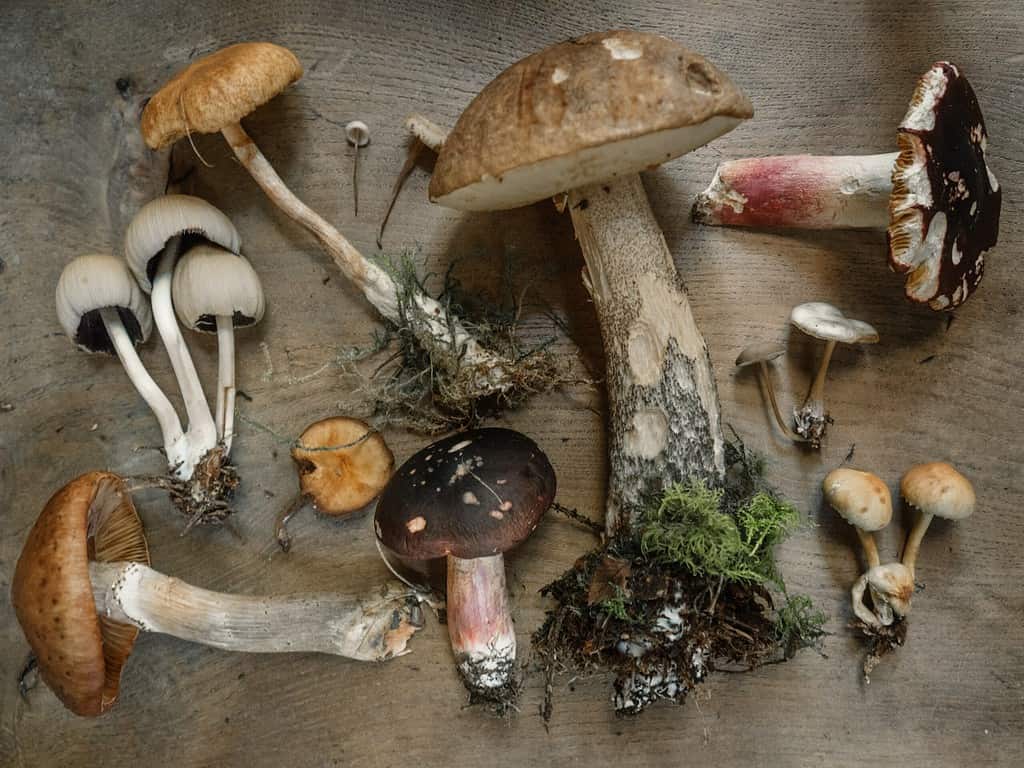
Physical Characteristics
Hopefully, when you’re out in the field, you have some idea of what mushrooms you’re likely to encounter. But how do you make sure you’re identifying the mushrooms properly?
Identifying edible mushrooms can be challenging, but there are a few key physical characteristics to look for. First, examine the cap of the mushroom. Is it smooth or textured? Does it have gills or pores? What color is it? What size is it? These characteristics can help you narrow down the type of mushroom you are looking at.
Next, examine the stem of the mushroom. Is it thin or thick? Does it have a ring or veil? What color is it? These characteristics can also help you identify the mushroom.
Finally, take note of the spore print. This can be done by placing the cap of the mushroom on a piece of paper overnight. The color of the spore print can help you identify the mushroom.
Habitat and Environment
The habitat and environment of the mushroom can also provide clues to its identity. Some mushrooms grow on trees, while others grow on the ground. Some prefer moist environments, while others prefer dry environments. It is important to take note of the location and surroundings of the mushroom when trying to identify it.
Additionally, it is important to be aware of any poisonous plants or fungi in the area. Mushrooms can absorb toxins from their environment, so it is crucial to forage in a safe and clean environment.
Overall, identifying edible mushrooms takes practice and patience. It is important to do your research, consult with experts, and be cautious when foraging.
Safety Precautions when foraging for mushrooms
When foraging for mushrooms, it is important to take safety precautions to avoid any potential risks. Here are some things to keep in mind:
Poisonous Mushrooms to Avoid
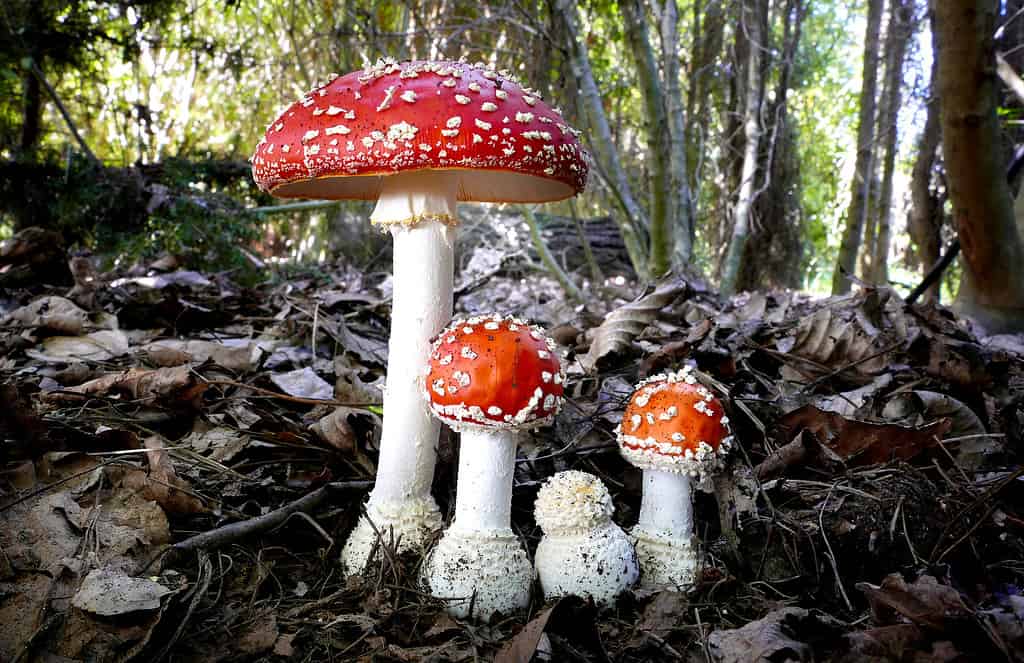
One of the most important things to remember when foraging for mushrooms is to avoid poisonous varieties. Some poisonous mushrooms can be difficult to distinguish from edible ones, so it is important to be knowledgeable about the types of mushrooms that grow in your area. I always bring a guidebook or use an app to help me identify the mushrooms I find.
There are a lot of mushrooms that are poisonous — we can’t possibly go through them all. Here too, it’s useful to look up what species grow in your area.
Some common poisonous mushrooms to avoid include:
- Amanita phalloides (death cap)
- Amanita muscaria (fly agaric)
- Galerina marginata (deadly galerina)
- Conocybe filaris (deadly cone)
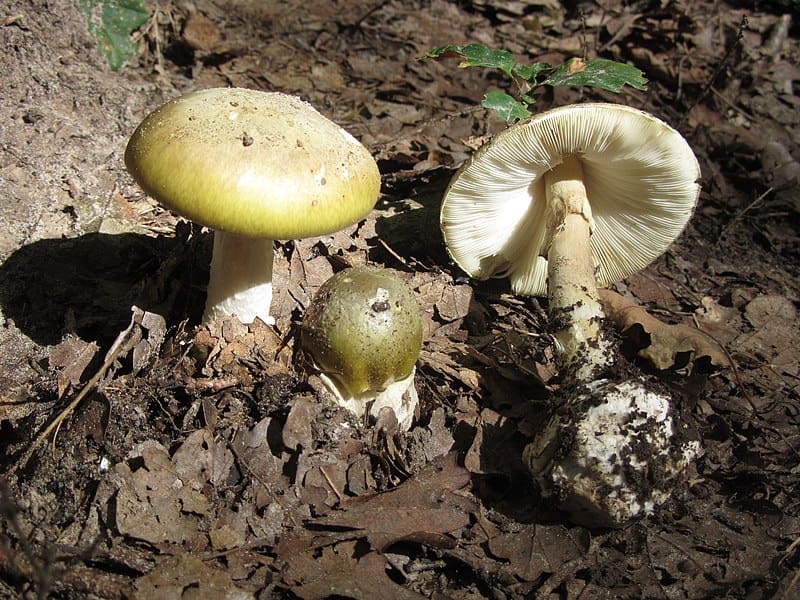
Common mushrooms to forage
Here are some common mushrooms you might encounter while foraging:
- Chanterelles: These mushrooms have a distinct yellow-orange color and a trumpet-like shape. They grow in clusters on the forest floor and are prized for their delicate flavor.
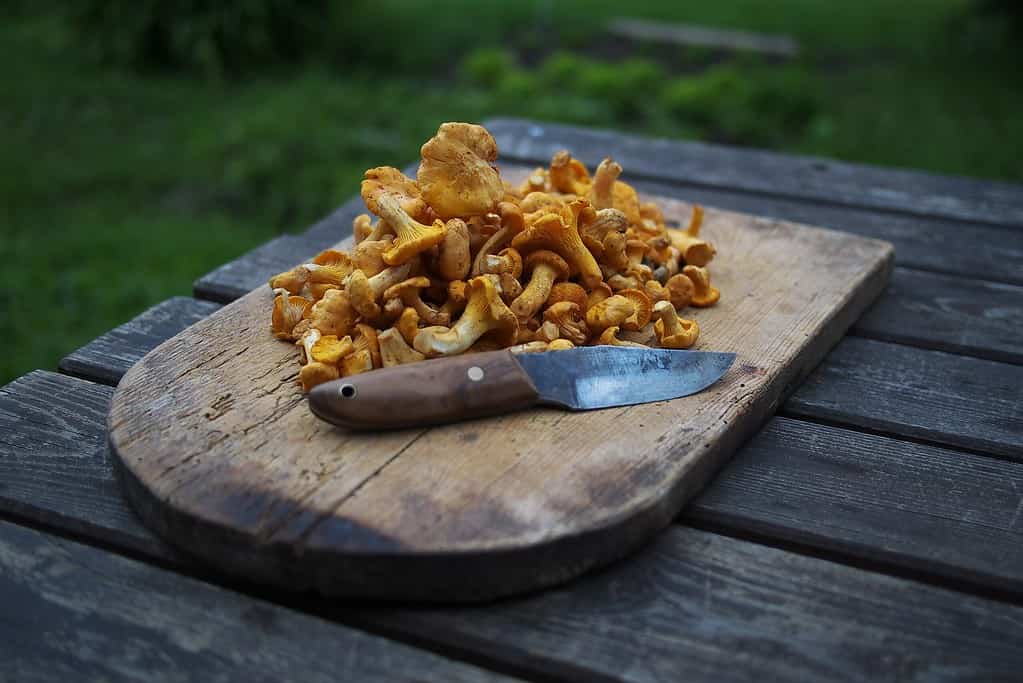
- Morels: These mushrooms have a distinctive honeycomb-like cap and a meaty texture. They grow in wooded areas and are often found in the spring.
- Porcini: These mushrooms have a large, round cap and a meaty texture. They grow in forests and are prized for their rich, earthy flavor.
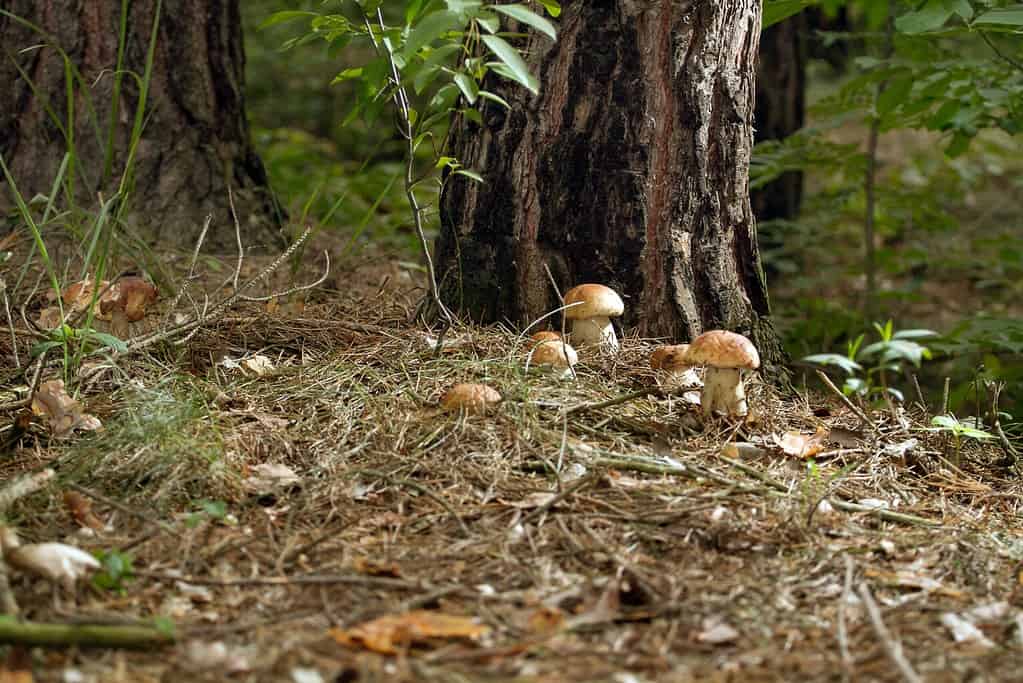
- Oyster mushrooms: These mushrooms have a thin, delicate cap and a mild, slightly sweet flavor. They can be found growing on dead trees or logs.
- Shaggy mane: These mushrooms have a unique shaggy appearance and a delicate, nutty flavor. They grow in meadows and fields.
- Lion’s mane: These mushrooms have long, flowing white spines and a mild, slightly sweet flavor. They grow on dead or dying hardwood trees.
- Hedgehog mushrooms: These mushrooms have a tooth-like appearance on the underside of their cap and a slightly sweet, nutty flavor. They can be found growing on the forest floor.
- Chicken of the woods: These mushrooms have a bright yellow or orange color and a meaty texture. They grow on the trunks of trees and are often used as a meat substitute in vegetarian dishes.
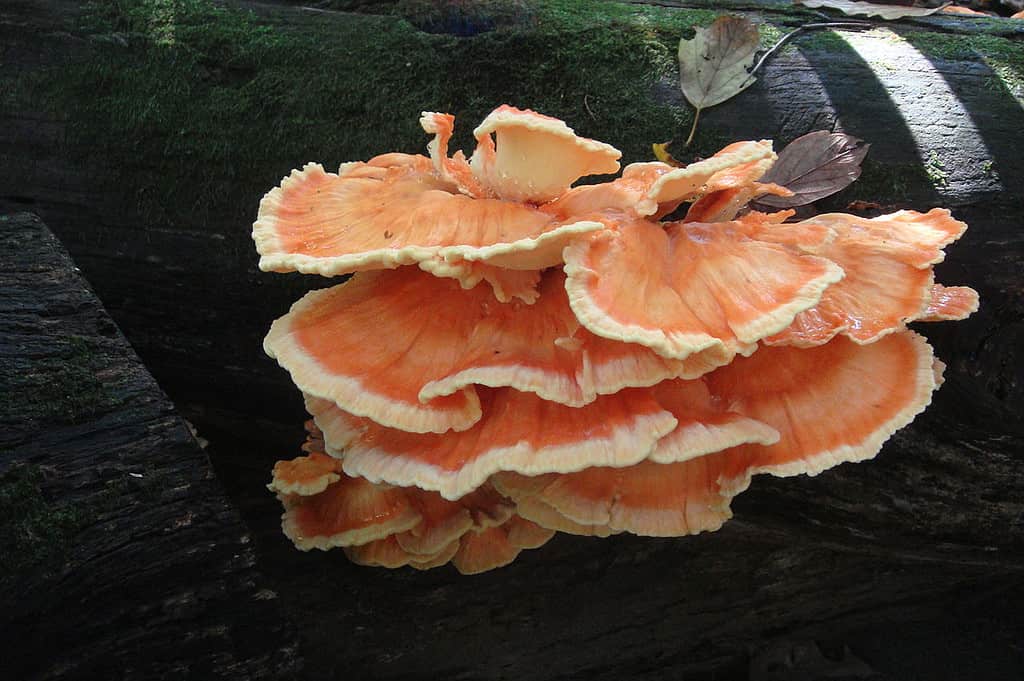
Foraging is an experience
Unless something really extreme is going on, you don’t need to forage; you forage because you want to and because it’s pleasurable and useful. It’s a pretty cool hobby as it keeps you active and engaged with nature — and you can do it with your friends as well.
Foraging for mushrooms can be a fun and rewarding activity, but it’s important to approach it with caution and respect for nature. Always make sure to properly identify the mushrooms you find before consuming them, and be aware of the potential risks associated with foraging. Remember to leave some mushrooms behind to ensure the health and sustainability of the forest ecosystem.
With a little knowledge and preparation, foraging for mushrooms can be a great way to connect with nature and enjoy the flavors and benefits of these unique fungi.
Was this helpful?







